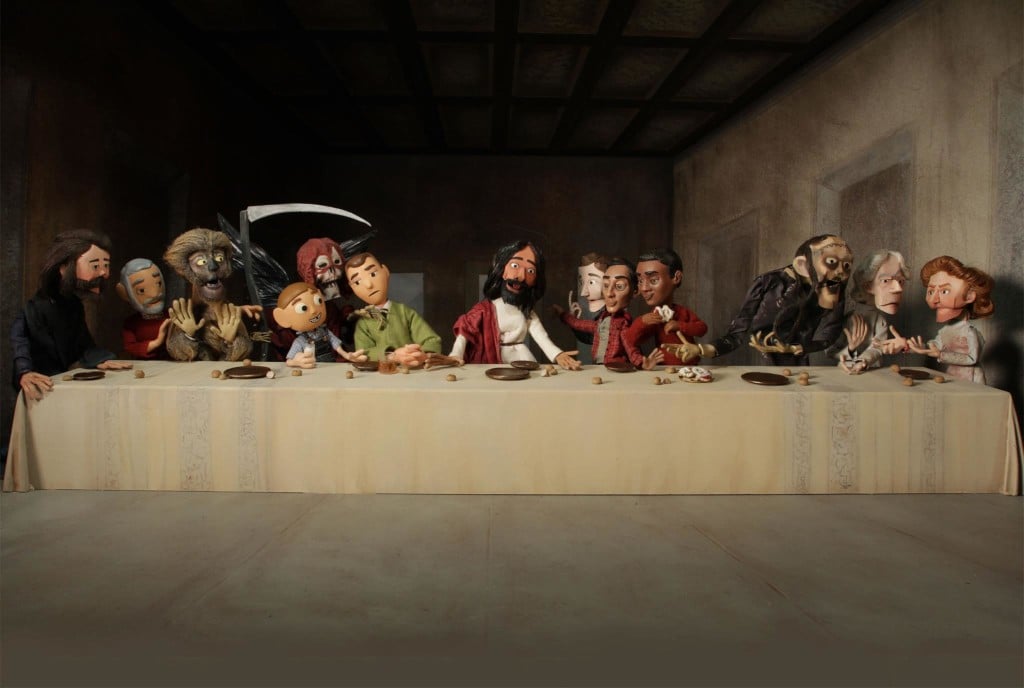Film review: Charlie Kaufman and Duke Johnson’s Anomalisa
March 14, 2016

Very few creative voices truly deserve their own suffix, but to describe something as Kaufmanesque is to invoke a particular form of mind-bending meta-narrative in which solemnity underlies irony and a wounded romanticism predominates. Over the course of films like Being John Malkovich (1999), Adaptation (2002), Eternal Sunshine of the Spotless Mind (2004) and Synecdoche, New York (2008), Charlie Kaufman has crafted multiple realities, twisting and bending the recognisable world into bold, often bewildering but always unique shapes. Kaufman’s latest offering may seem like a radical departure, but only the form has changed; the lovelorn, cathartic qualities which distinguished his previous work are brought to bear on an entirely different canvas, with beautiful results.
Kaufman teams up with stop-motion animation director Duke Johnson to tell the story of Michael Stone (voiced by David Thewlis), a customer service expert who travels from Los Angeles to Cincinnati to deliver a promotional presentation for his latest book. Michael is staying at the upscale but bland Fregoli Hotel, and quickly succumbs to the sense of detachment such places engender. Everyone Michael encounters looks the same and has the same voice (the voice of Tom Noonan), with the exception of Lisa (voiced by Jennifer Jason Leigh), a shy young woman whose insecurities stem from a scar on her face. Lisa is attending Michael’s presentation, and Michael quickly becomes infatuated with his ‘Anomalisa’.
 While animation aimed at an adult audience has thrived on television over the past thirty years, it has largely disappeared from the big screen, existing beyond the mainstream with films like Persepolis (2007), Waltz with Bashir (2008) and Richard Linklater’s experiments with rotoscoping; the thinking being that the process is so time consuming and costly that the end product must appeal to the widest possible audience. While Aardman continues to fly the flag for stop-motion animation, the form has largely fallen by the wayside due to these economic considerations – Kaufman and Johnson turned to Kickstarter to raise their relatively meagre $8 million budget – but the results in Anomalisa are astounding and lend a texture to the characters which makes them feel tactile and alive in a way that the best digimation cannot match. One can hope that Anomalisa sparks a renaissance in the use of this methodical but miraculous medium for something other than family-orientated entertainment.
While animation aimed at an adult audience has thrived on television over the past thirty years, it has largely disappeared from the big screen, existing beyond the mainstream with films like Persepolis (2007), Waltz with Bashir (2008) and Richard Linklater’s experiments with rotoscoping; the thinking being that the process is so time consuming and costly that the end product must appeal to the widest possible audience. While Aardman continues to fly the flag for stop-motion animation, the form has largely fallen by the wayside due to these economic considerations – Kaufman and Johnson turned to Kickstarter to raise their relatively meagre $8 million budget – but the results in Anomalisa are astounding and lend a texture to the characters which makes them feel tactile and alive in a way that the best digimation cannot match. One can hope that Anomalisa sparks a renaissance in the use of this methodical but miraculous medium for something other than family-orientated entertainment.
The time has come for voice acting to be recognised in the same way as motion capture has been in recent years. Anomalisa features three exceptional vocal performances which invest the puppets with emotional depth; the exchanges between Thewlis and Leigh lay bare the flaws and frailties of Michael and Lisa with warmth and naturalism, and Noonan’s ability to imbue each of the multiple characters he voices with a distinct quality is a terrific achievement. Anomalisa began life as a ‘sound play’, and this is evident in the film’s detailed sound design, which heighten scenes alongside Carter Burwell’s plaintive score.
All the leitmotifs of Kaufman’s canon are here: loneliness, social awkwardness, alienation, despair, dread, ennui, bathos, insignificance, all shot through with a mordant, hard-won humour which takes its cues from Kafka and Pirandello. Anomalisa addresses these themes with such searing honesty that one immediately makes the conceptual leap of regarding these puppets as fully formed people. Johnson’s compositions evoke the unreality of banality, the sensation of the human spirit wilting in controlled spaces, the motions of functional malaise; the minute details of the milieu are what makes Anomalisa such an emotionally charged experience. Anomalisa is an intimate character portrait that is both ethereal and raw; Kaufman stares the fragility of human identity squarely in the eye and doesn’t blink, steeling the viewer to join him, grasping hope from the jaws of fatalism and embracing life’s anomalies. The Kaufman universe continues to transfigure into fascinating shapes.
https://www.youtube.com/watch?v=JX9v9cRKAnI
Follow Daniel Palmer on Twitter at @mrdmpalmer.

Comments